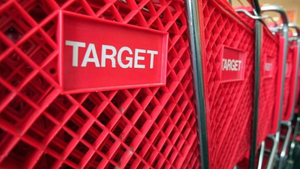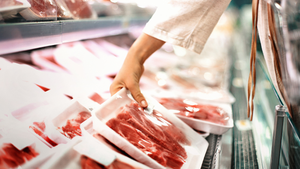WHOLESALING AT THE CROSSROADS
MEMPHIS, Tenn. -- For wholesalers, the big issues today could not be any more complex or fundamental to future business success.The days of mainly warehousing products and shipping them to stores are all but over. A new order of partnership between independent retailers and wholesalers is emerging. Technology is driving changes in every aspect of business. Third-party firms, such as Non-Stop Logistics,
October 10, 1994
MARC MILLSTEIN
MEMPHIS, Tenn. -- For wholesalers, the big issues today could not be any more complex or fundamental to future business success.
The days of mainly warehousing products and shipping them to stores are all but over. A new order of partnership between independent retailers and wholesalers is emerging. Technology is driving changes in every aspect of business. Third-party firms, such as Non-Stop Logistics, are threatening to m ake inroads into what traditionally has been the sole domain of the wholesaler.
With these issues in mind, wholesalers from across the country will attend this year's Food Industry Productivity Conference here Oct. 23 to 26. The conference is sponsored by the National- American Wholesale Grocers' Association/International Foodservice Distributors Association, in conjunction with nine other leading trade associations.
In an interview shortly before the conference, SN spoke with George Williams, vice president of distribution at
Spartan Stores, Grand Rapids, Mich., and chairman of this year's Productivity Conference. Williams addressed a wide range of critical issues facing wholesalers today.
Here are some of the highlights of what he had to say: SN: What do you see as the most important issue facing wholesalers?
GW: Efficient Consumer Response, without a doubt, is the hottest topic in the industry today. Twenty of the workshops (at the Productivity Conference) will be related to ECR-type activities. Executives are concerned about what ECR means to their organizations, especially in the area of distribution.
How do we handle cross-docking? How do we become paperless in our transactions with suppliers and retailers? What will facility consolidation, reduced inventories and the speeding up of product flow up mean to us as we move forward with ECR?
SN: How would you characterize the progress wholesalers have made in relation to the ECR initiative?
GW: Some companies are moving forward rapidly. Look at what Fleming is doing with re-engineering, and it would be naive to say that Supervalu isn't in the throes of some kind of re-engineering.
But there are many people in the middle of the road saying, "I'll wait until all the ECR committees report on what I should be doing." There are also people still intent on beating up vendors and getting the best deal they can in the hope it will sustain them over the long haul.
My perception is that we have several thought processes going on in our industry. Some people are in the forefront with re-engineering; other people are taking a wait-and-see attitude, and others do not even have a clue.
SN: Could you address the issue of where wholesaling is headed, especially in the services they provide?
GW: If a wholesaler thinks it's business as usual anymore, that company is not going to be in business very long. To succeed in the future, wholesale distributors are going to have to change and become a truly value-added piece of the supply chain.
My feeling is that if a wholesaler in the future cannot offer the best value-added way of moving goods from the manufacturer to the retailer, then manufacturers and retailers are going to find a better way of doing it. That is the seriousness of what is at stake.
We are already seeing firms like Non-Stop Logistics accomplishing what we do today at a much lower cost and a higher value. Wholesalers have to realize that we have to be that efficient and that good at what we do -- or we may find ourselves dinosaurs as we look to the future.
SN: Is the situation different for self-distributing chains vs. wholesalers?
GW: The only difference is that the self-distributing chains are probably ahead of wholesalers today from an ECR standpoint, only because they own their own stores and can develop common systems much more easily.
We are involved in a major effort to convince our retailers to become involved in tracking point-of-sale activity, implementing computer-assisted ordering and upgrading their inventory control systems. If we don't start having that information link built into the entire supply chain, our hands are going to be tied in terms of how efficient we can be.
Some manufacturers are saying there may even be different costs for doing business with different customers in the future. That could be a competitive advantage or disadvantage. Companies that are most efficient are going to be able to flow goods to the consumer at the best cost, compared with a firm that is inefficient.
SN: In what ways will the wholesaler's role change in the future?
GW: I see many of the larger and better wholesalers trying to build better relationships with their customers. We have to help independent retailers be successful, and we have to help them get whatever it is they need, such as technology, to be competitive in the future.
The world of the independent retailer is changing also. They are looking around and saying, "How can my wholesaler really help me in making the changes that I need to make to stay in business." The services that wholesalers need to provide go beyond distribution.
SN: I wonder if you could comment on the overall progress being made in the area of improving product distribution.
GW: I think Spartan and some other wholesalers are beginning to experience the same thing. We are building better relationships with suppliers and manufacturers. We are beginning to concentrate on creating value-added activities vs. just adding costs to the distribution chain.
Even though from a technological standpoint we are not in the best shape yet to support cross-docking or flow-through activities, we are moving in that direction. We have a vendor-managed inventory program now in place with two manufacturers. It is an evolutionary process. The next step would be helping manufacturers better forecast demand.
We all have to build better relationships with our suppliers. We have to sit down, roll up our sleeves and work together, even if it is a bitter pill to have to say, "We may have to do things differently to take some costs out of the system."
SN: How quickly do you think these changes are going to take place? A year or two, or more?
GW: I think we are going to make significant progress in the next two years, but it will be farther out than that for many people. Some of it is tied to how quickly manufacturers change the pricing and promotional programs they offer. The way we promote goods today does not involve the right reward or recognition system to promote efficiency. But manufacturers are beginning to understand that, and some of them have begun to make the shift to becoming more efficient.
SN: Let's move on to cross-docking and flow-through distribution. How important are these practices to the wholesaler industry?
GW: They are key. We have to reduce our inventory. We have to move product more quickly through our facilities and get out of the idea that we are running warehouses. Instead, we have to start talking about distribution centers. We not only have to take inventory out of the pipeline but also move cost out of the facilities we operate.
SN: It is my impression there is not much cross-docking going on at this point. Is that true?
GW: That's a fair statement if you look at wholesalers. But if you look at self-distributing chains, they are doing an awful lot.
SN: How quickly will wholesalers begin to get on board?
GW: Some wholesalers are already there. The critical fact is understanding that what we are trying to develop is a partnership with our suppliers. How do we take costs out of what we are doing? That ought to be the rallying point for everyone.
SN: What percentage of products do you see being involved in cross-docking down the road?
GW: If you let your imagination go, you can say 100%. But I think it will move in categories. Paper goods might be a good candidate today, followed by dog food tomorrow. It is going to come down to critical mass and the old 80-20 rule. The 20% of items that do 80% of the volume are the ones to target first.
Then you also have to figure out how to move the other 20% of the business, which is 80% of the items. It may require a different technique to move them through a cross-dock or flow-through building. Critical mass is what you go after first, but I can have everything moving to the consumer in that manner at some point in the future.
SN: Could we talk about continuous replenishment programs? How are they changing the role of wholesalers?
GW: Moving to a just-in-time inventory replenishment program requires us to get much more accurate information about point-of-sale activity in the stores and being able to share it with manufacturers.
It also means looking at what that means for the distribution center itself. If I am moving inventory on a just-in-time basis, what does that mean for my buildings? How do I move the goods?
If we were supplying all Wal-Mart-sized stores, it would be a different problem. But we as wholesalers could very well be distributing goods to a 100,000-square-foot store and at the same time to a 5,000-square-foot store.
SN: What are the key technology-related initiatives that you see helping wholesalers to become more efficient?
GW: When we talk about the distribution center, inventory control software and warehouse systems obviously are helping us get a handle on our expenses. In transportation, onboard computers and routing systems are helping us become more efficient. Those are the types of things we are looking at in our re-engineering process.
About the Author
You May Also Like




